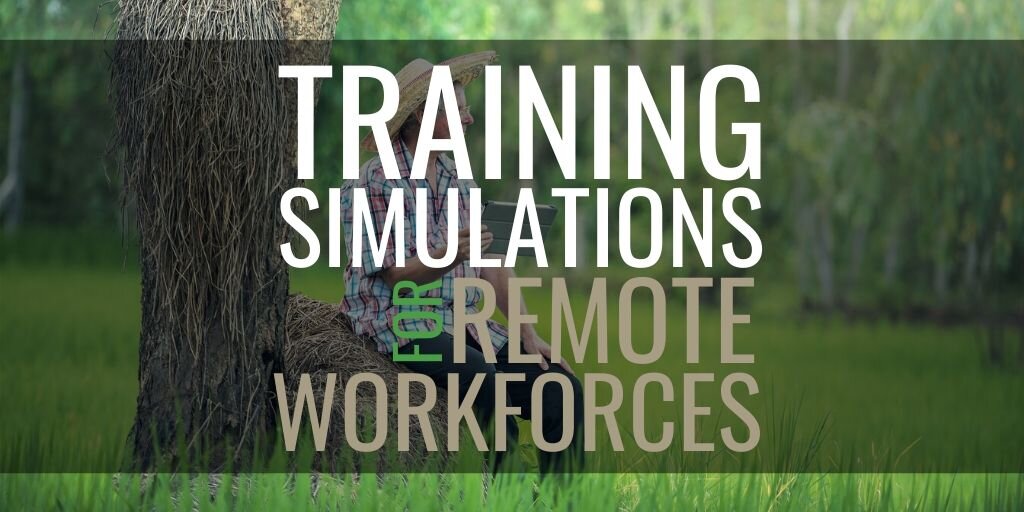Why effective training simulations matter more than ever
/With the whole world scrambling to figure out how to carry on with business in the face of the novel coronavirus (SARS-CoV-2) and its related illness, COVID-19, many organizations are dipping their toes for the first time into virtual work. What this looks like for a given organization depends on the nature of its business — What does it produce? What’s its target market? How does it reach that market? And how does it train its employees to ensure that happens?
For organizations working traditionally with face-to-face meetings and training, COVID-19 has been a rude awakening. Whether we have any comfort level with virtual work styles, due to social distancing requirements, we’re having to jump in with both feet now. And while the current health emergency is potentially disastrous on many levels for organizations that can’t go virtual, those that can adapt may end up benefiting from having been forced to dive in.
The most obvious tools being embraced right now are teleconferencing and videoconferencing platforms. And thus we find ourselves in an experiment. As people cease to commute yet continue to be productive, will they find they like this “new normal?”
Inevitably some will and some won’t. But it’s a safe assumption that some organizations will recognize the upside to virtual work and continue to incorporate it. Once their productivity catches up to pre-COVID-19 levels, they’ll be able to think about optimizing how they virtually work.
One virtual learning tool that will probably get more buy-in now is the simulation. An effective workplace simulation can provide an adaptive experience for learners, bridge the gap between theory and practical behaviour (“learning by doing”), allow for real-time feedback, and increase learners’ confidence in their performance.
Simulation technology has also improved. Even though situated learning theory holds that learning outcomes are best achieved in the actual environment where a task takes place, recent research finds that high-quality off-site simulations, accompanied by high-quality facilitation, may be even more effective. For organizations with far-flung employees and trainers, a simulation can be an efficient way to deliver training, with development costs offset by travel savings. Not only that; a simulation can be used repeatedly, becoming even more cost-effective in the long run.
As with all the virtual tools organizations are hastily becoming familiar with, simulations come with some challenges:
They can be costly to develop and manage. Organizations will need to have a good understanding of how those costs can be offset (e.g., less travel, potential for reuse).
There may be fidelity/authenticity issues. How closely a simulation mimics an actual work situation depends on the nature of the work, not just the quality of the simulation. For example, a surgical simulation may not fully represent the realities in an actual operating room.
Learners have different styles and different work habits. Some will find simulations compelling; others will struggle more to make connections between a simulation and a real-life task.
Determining the level of complexity can be delicate. Learners may experience cognitive overload if a simulation involves multiple complex skills (e.g., a flight simulator).
They lack a human touch. Learning outcomes are better when simulations are accompanied by good facilitation or mentorship. They are a tool, not a technique, and they work best when managed by someone who knows how to use them well.
While simulations won’t be the first line of defence against the growing COVID-19 crisis, the door is opening to virtual solutions and tools, and simulations are just one such option. It will be exciting to see how organizations adapt their work over the next weeks and months, and which virtual tools they embrace.
How is your business or organization responding to the ongoing health crisis? Are you working from home? What tools are you using to stay productive? Drop us a line in the Comments section below or reach out on Twitter.
Need help transitioning your classroom training to online learning? Contact us here!











